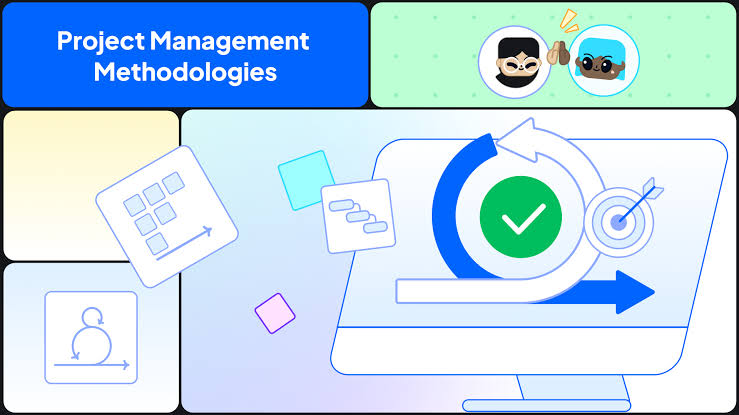Choosing the right project management methodology depends on the nature of the project, the industry, and the desired level of flexibility. Traditional methods like Waterfall and PRINCE2 still play a vital role in highly regulated environments, while Agile, Scrum, and Kanban dominate sectors that thrive on adaptability.
Effective project management is the backbone of successful organizations. In 2025, businesses face increasingly complex projects that demand not just efficiency but adaptability, collaboration, and data-driven decision-making. Project management methodologies provide structured approaches to planning, executing, and monitoring projects, helping teams deliver on time, within budget, and with high quality.
Here are the top ten project management methodologies widely used across industries today.
10. Waterfall Methodology
The Waterfall methodology is one of the oldest and most structured approaches to project management. It follows a linear sequence where each phase—such as planning, design, development, and testing—must be completed before moving to the next.
This method is best suited for projects with well-defined requirements, such as construction or manufacturing. Its predictability and clear documentation make it ideal for industries where changes during the project are minimal, though it can be less flexible in dynamic environments.
9. PRINCE2
PRINCE2, which stands for Projects IN Controlled Environments, is a process-based methodology widely adopted in Europe and government sectors. It divides projects into manageable stages with clear roles, responsibilities, and regular progress reviews.
In 2025, PRINCE2 remains relevant for large and high-risk projects that require strict governance and accountability. Its emphasis on risk management and project justification makes it a preferred choice for organizations with formal project oversight requirements.
8. Lean Project Management
Lean project management focuses on maximizing value while minimizing waste. Inspired by the Lean principles used in manufacturing, this methodology identifies inefficiencies and streamlines processes to enhance productivity.
Companies in product development, healthcare, and IT increasingly adopt Lean to cut costs and deliver faster. By 2025, AI-driven analytics are often combined with Lean to continuously identify bottlenecks and improve workflows.
7. Critical Path Method (CPM)
The Critical Path Method is a scheduling-based methodology that helps project managers identify the sequence of tasks that determine the minimum project duration. By focusing on critical activities, teams can allocate resources efficiently and avoid delays.
CPM is especially useful in construction, engineering, and event management, where project timelines are complex and delays can be costly. Modern software now integrates CPM with predictive analytics to provide early warnings for potential schedule risks.
6. Critical Chain Project Management (CCPM)
CCPM builds on the principles of the Critical Path Method but emphasizes resource optimization and buffer management. It helps teams focus on critical tasks while managing uncertainties and avoiding multitasking, which often causes delays.
In 2025, CCPM is popular in manufacturing, aerospace, and R\&D projects, where resource availability and timing are critical. By strategically managing buffers, CCPM ensures projects remain on track despite unforeseen challenges.
5. Agile Methodology
Agile has become a dominant methodology in software development and beyond. It emphasizes iterative progress, flexibility, and continuous collaboration between teams and stakeholders. Projects are broken down into smaller increments, allowing for rapid feedback and adaptation.
Agile is now widely applied in marketing, product design, and business transformation initiatives. Its focus on customer-centric outcomes and adaptability makes it essential in fast-changing environments where requirements evolve frequently.
4. Scrum Framework
Scrum is a specific Agile framework that organizes work into time-boxed iterations called sprints. It assigns defined roles such as Product Owner, Scrum Master, and Development Team to streamline responsibilities and ensure accountability.
In 2025, Scrum is still highly favored in software development, game design, and digital transformation projects. Its use of daily stand-ups, sprint reviews, and retrospectives fosters transparency, team collaboration, and continuous improvement.
3. Kanban Method
Kanban is a visual project management methodology that focuses on workflow optimization and limiting work in progress. Teams use boards with columns representing different stages of work, making it easy to spot bottlenecks and track progress.
Today, Kanban is widely used in IT operations, marketing, and manufacturing. Its simplicity and adaptability, combined with AI-powered digital boards, allow teams to predict completion times and allocate resources more effectively.
2. Six Sigma
Six Sigma is both a methodology and a set of tools aimed at improving process quality by identifying and eliminating defects. Using statistical analysis, it seeks to reduce errors and ensure consistent outputs in complex projects.
In 2025, Six Sigma remains prominent in manufacturing, healthcare, and finance. When combined with Lean principles (Lean Six Sigma), it delivers process efficiency and quality control, making it valuable for projects requiring high reliability.
1. Hybrid Project Management
Hybrid project management has emerged as the most popular approach in 2025 because it blends the strengths of traditional and modern methodologies. By combining Agile’s flexibility with Waterfall or PRINCE2’s structure, teams can adapt their approach to suit each project’s complexity and stakeholder requirements.
Hybrid models are widely used in enterprises managing large digital transformation initiatives or multi-department projects. With AI-driven tools, hybrid project management allows organizations to switch between iterative and structured approaches seamlessly, ensuring the best of both worlds.
